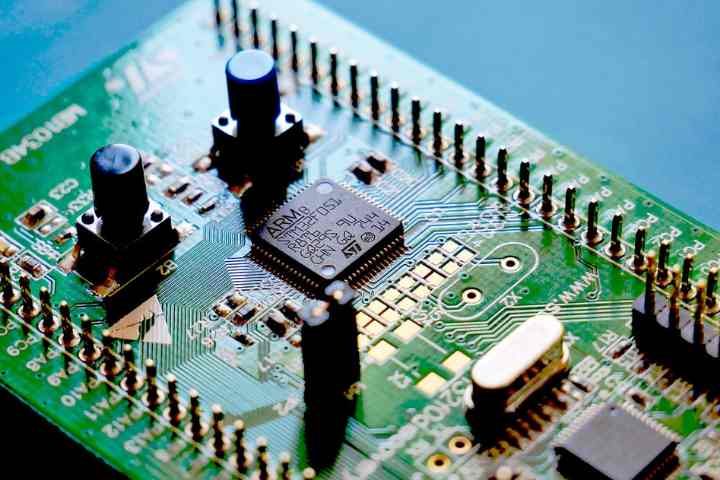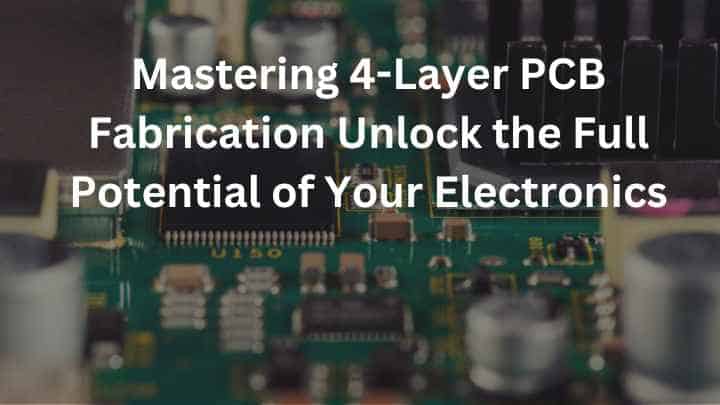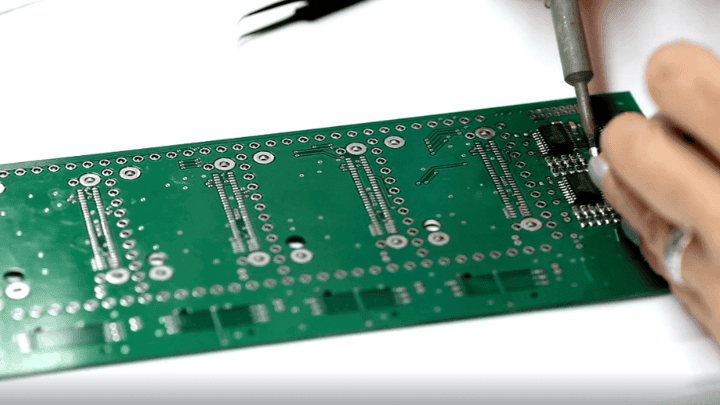ENIG vs HASL: A Comprehensive Guide to PCB Surface Finishes
ENIG vs HASL Introduction
In the intricate realm of Printed Circuit Boards (PCBs), the choice of surface finish plays a pivotal role in determining the functionality, reliability, and efficiency of the end product. ENIG (Electroless Nickel Immersion Gold) and HASL (Hot Air Solder Leveling) stand out as two of the industry’s most prominent PCB surface finishes. This article delves deep into a comparison between these finishes ENIG vs HASL, offering insights that are often overlooked in standard discussions. For enthusiasts keen on exploring the vast world of PCBs, Finest PCB is a treasure trove of resources, including a detailed guide on FR4 PCBs.
What is HASL (Hot Air Solder Leveling)?
Definition of HASL (Hot Air Solder Leveling)
HASL, a time-tested method in PCB surface finishing, involves submerging the PCB into a molten solder bath. This immersion ensures all exposed copper surfaces are adequately covered. Following this, air knives blow hot air across the surface, removing excess solder and leaving behind a smooth finish.
Process of HASL
The HASL process involves immersing the PCB into a molten solder bath. This immersion ensures that all exposed copper surfaces are adequately covered. Once the board is submerged, it’s then removed from the bath, and hot air knives are used to blow off the excess solder. This results in a smooth and even finish, which is essential for subsequent soldering processes.
HASL Materials Used
Traditionally, the solder used in HASL is a combination of tin and lead. However, with the increasing demand for RoHS-compliant (Restriction of Hazardous Substances) products, lead-free versions of HASL have been developed and are now widely used.
HASL Apllicaiton
HASL is suitable for a wide range of PCB applications, especially where PCB manufacturing cost is a significant factor. It’s ideal for through-hole soldering and offers excellent solderability, ensuring a strong bond between components and the board.
Advantages of HASL:
- Cost-Effective: A primary reason for its widespread use, HASL is often more affordable than other finishes.
- Excellent Solderability: It ensures a robust bond between the solder and the copper pads, crucial for the longevity of the PCB.
- Long Shelf Life: Ideal for projects that might not immediately go into the assembly phase.
Disadvantages of HASL:
- Surface Irregularities: The uneven surfaces can be challenging for Surface Mount Devices (SMDs), especially those with a fine pitch.
- Lead Concerns: Traditional HASL uses lead, which isn’t RoHS compliant. However, lead-free HASL options have emerged as alternatives.
What is ENIG (Electroless Nickel Immersion Gold)?
Definition of ENIG (Electroless Nickel Immersion Gold)
ENIG is a two-layer metallic coating. Nickel acts as a barrier to the copper and provides a surface for soldering. A thin layer of gold, which protects the nickel during storage, covers this nickel layer. ENIG, which stands for Electroless Nickel Immersion Gold, is a more modern surface finish used in PCBs. It’s known for its excellent surface planarity and is particularly suitable for PCBs with fine pitch components.
Process of ENIG
The ENIG process is a multi-step one. First, the PCB undergoes cleaning and micro-etching, preparing the copper surface for the subsequent layers. Then, a layer of nickel is deposited onto the copper. This nickel layer acts as a barrier, preventing the copper from diffusing into the gold layer. Finally, a thin layer of gold is applied, which protects the nickel from oxidation and provides a solderable surface.
ENIG Materials Used
The primary materials used in ENIG are nickel and gold. The nickel acts as a barrier between the copper and the gold, ensuring that the solder only bonds with the gold during the soldering process. The gold, though thin, provides excellent protection against oxidation, ensuring a long shelf life for the PCB.
ENIG Applications
ENIG is widely used in applications where surface planarity is crucial. It’s ideal for fine-pitch components, BGAs (Ball Grid Arrays), and chip-scale packages. The flat surface ensures that these components can be soldered onto the board with a high degree of accuracy, ensuring optimal performance.
- High-Density Interconnect (HDI) Boards
- Fine-Pitch Components
- Flexible Circuits
- RF and Microwave Circuits
- Automotive Electronics
Advantages of ENIG:
- Uniform Surface: Perfect for intricate components like BGAs and fine-pitch components.
- Durability: The gold layer offers excellent protection against oxidation.
- RoHS Compliant: Being lead-free, ENIG is suitable for RoHS-compliant PCBs, making it a favorite for environmentally-conscious manufacturers.
Disadvantages of ENIG:
- Cost Implications: ENIG generally comes with a heftier price tag compared to HASL.
- Black Pad Syndrome: A rare but significant issue where the gold and nickel layers separate, leading to unreliable solder joints.
ENIG vs HASL: A Direct Comparison
Choosing between ENIG and HASL requires a thorough understanding of the project’s specifics:
| Factor | ENIG | HASL |
|---|---|---|
| Cost | Generally pricier | More budget-friendly |
| Surface | Uniform, suitable for intricate components | Can be uneven, posing challenges for SMDs |
| Shelf Life | Extended | Similarly long |
| RoHS | Compliant (Lead-free) | Both leaded and lead-free options available |
Delving Deeper: The Science Behind the Finishes
The Chemistry of HASL:
Hot Air Solder Leveling, as the name suggests, uses solder, typically a combination of tin and lead. The solder protects the copper from oxidation. The process involves dipping the PCB into a bath of molten solder. The solder adheres to the exposed copper pads, and the excess is blown off using hot air knives. The result is a board ready for component soldering.
The Chemistry of ENIG:
ENIG, on the other hand, is a more complex process. The board undergoes a series of baths, starting with cleaning and micro-etching of the copper. This is followed by the deposition of a thin layer of nickel, either through electroless deposition or an autocatalytic process. The nickel serves as a barrier, preventing the copper from diffusing into the gold layer. The final step is the immersion gold, which protects the nickel from oxidation.
Environmental Considerations
With increasing global emphasis on sustainability, the electronics industry isn’t exempt from environmental considerations. RoHS (Restriction of Hazardous Substances) compliance is now a significant factor in PCB manufacturing. While ENIG is inherently RoHS compliant due to its lead-free nature, HASL can be made compliant by using lead-free solder.
Other PCB Surface Finishes
While ENIG and HASL are popular, the world of PCB finishes is vast. OSP (Organic Solderability Preservative), Immersion Tin, ENEPIG (Electroless Nickel Electroless Palladium Immersion Gold), and Immersion Silver are just a few alternatives. Each finish has its unique advantages, and the choice often boils down to the specific requirements of a project. if you want to learn about PCB surface finish, please check this article The Ultimate Guide to PCB Surface Finishes: Making the Right Choice
Conclusion
The choice between ENIG and HASL, or any other finish for that matter, should be an informed one. Factors like the intended application, budget, and environmental considerations play a crucial role. Always remember, the surface finish can significantly impact the PCB’s performance, so choose wisely.
For those keen on diving deeper into the nuances of PCBs, Finest PCB offers a plethora of articles and resources. Their upcoming participation in the PCB West Conference & Exhibition 2023 promises to be a treasure trove of insights.
ENIG vs HASL FAQ
Which surface finish is best for PCB?
The best surface finish for a PCB depends on the specific requirements of the project, such as the intended application, budget, and environmental considerations. Commonly used finishes include HASL, ENIG, OSP, Immersion Silver, and Immersion Tin. Each has its advantages and is suitable for different applications.
How thick is a PCB surface finish?
The thickness of a PCB surface finish varies depending on the type of finish and the specific requirements of the project. For instance, the gold layer in ENIG is typically between 3 to 8 microinches, while the nickel layer is between 120 to 240 microinches. HASL thickness can vary based on the board’s design and the solder bath’s temperature.
What is HAL surface finish in PCB?
HAL, or Hot Air Leveling, is a type of PCB surface finish where the board is dipped into molten solder. Excess solder is then removed by blowing hot air over the board’s surface. It results in a smooth and even finish, suitable for through-hole soldering.
What is the difference between HASL and ENIG?
HASL (Hot Air Solder Leveling) involves dipping the PCB into molten solder and then using hot air to remove excess solder. ENIG (Electroless Nickel Immersion Gold) is a two-layer coating with a nickel barrier layer and a thin gold layer on top. While HASL is cost-effective, ENIG provides a flatter surface suitable for fine-pitch components.
Is ENIG worth it?
ENIG is often considered worth it for projects that require a flat surface finish, such as those using fine-pitch components or BGAs. It offers excellent protection against oxidation and provides a reliable soldering surface. However, it is generally more expensive than finishes like HASL.
What are the disadvantages of ENIG?
Some disadvantages of ENIG include its higher cost compared to finishes like HASL, potential issues like “black pad” syndrome which affects solder joint reliability, and the fact that it’s not reworkable once applied.




